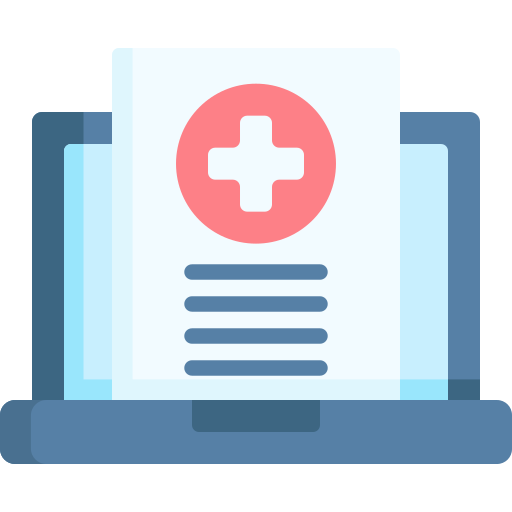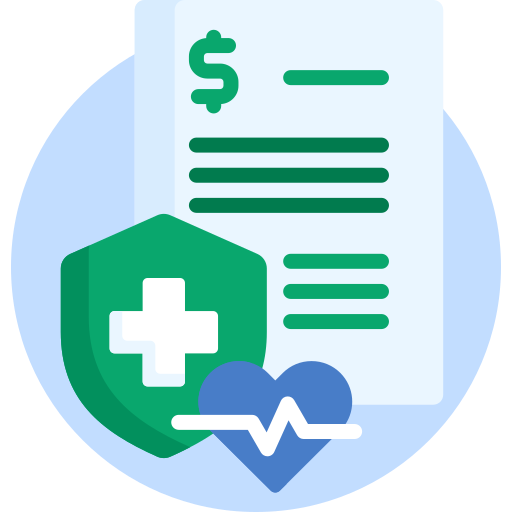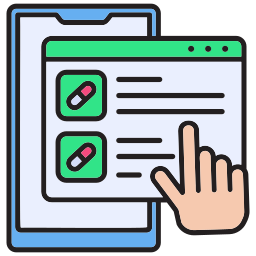Healthcare has long struggled with fragmented data systems. Patient records are often locked within isolated networks, making coordination between hospitals, payers, and digital health tools frustratingly slow.
TEFCA is a federally backed framework designed to create a standardized, secure, and nationwide approach to health data exchange. It acts as a unified playbook for how healthcare organizations, regardless of size, type, or vendor, can share electronic health information (EHI) seamlessly across systems.
Why does it matter? Because better data sharing means better care. With TEFCA, a patient’s health history can follow them, whether visiting a specialist across the country or using a new virtual care platform. It lays the groundwork for true interoperability, enabling clinical insights, care coordination, and informed decision-making at scale.
Before TEFCA, the U.S. healthcare system relied on patchwork solutions. Standards like Direct Messaging, HL7, and IHE worked in silos. Networks like CommonWell and Carequality allowed limited data exchange but lacked a universal governance model. FHIR APIs brought modern flexibility, yet adoption remained uneven.
TEFCA builds on these earlier efforts, bringing structure, trust, and a national scope to the healthcare interoperability mission.
🤔 What is TEFCA?
TEFCA, or the Trusted Exchange Framework and Common Agreement, is a federally initiated framework designed to streamline and standardize how electronic health information (EHI) is shared nationwide. Its primary purpose is to establish a single, national network for health data exchange that allows hospitals, payers, public health agencies, and developers to securely share information, regardless of their existing systems or locations.
TEFCA was created to simplify health data exchange by replacing fragmented, regional systems with a unified, secure, and trusted structure. Instead of relying on custom integrations or limited vendor networks, TEFCA offers a common set of rules and technical guidelines that anyone in the network must follow. This allows patient data to flow across platforms and geographies without friction.
The framework enables consistent access to clinical and administrative data for treatment, care coordination, public health, and individual access. It is a foundational element in building a truly interoperable healthcare ecosystem.
Key Components of TEFCA
TEFCA is built on two primary pillars:
- The Trusted Exchange Framework (TEF):
A set of non-binding principles that promote data sharing, transparency, privacy, and security. It outlines how organizations like EHR vendors, HIEs, and government agencies should collaborate and build trust in a national exchange system. - The Common Agreement (CA):
A legally enforceable agreement that QHINs must sign. It includes technical, legal, and operational policies that govern how data is accessed, used, and exchanged within the TEFCA network.
These components create a scalable model that supports query-based exchange, patient access services, and FHIR-based API access under a consistent governance structure.
Backed by the 21st Century Cures Act
TEFCA wasn’t built in isolation. Its foundation lies in the 21st Century Cures Act, passed by Congress in 2016. This legislation aimed to modernize the American healthcare system, and one of its key mandates was to improve interoperability and patient access to health data.
The Act directed the Office of the National Coordinator for Health IT (ONC) to develop a trusted framework for nationwide health data exchange. TEFCA is the direct result of that mandate. By aligning with the Cures Act, TEFCA supports the law’s broader goals: breaking down information silos, preventing information blocking, and giving patients easier access to their health records.
In short, TEFCA operationalizes the promise of the Cures Act, moving the industry closer to a connected and transparent healthcare system.
Related Read: Understanding Cures Act Compliance: A Modern Healthcare Imperative
What Are QHINs and Their Role in TEFCA?
Qualified Health Information Networks (QHINs) are central to how TEFCA operates. They form the core infrastructure that enables nationwide, TEFCA-based health data exchange by linking healthcare organizations, payers, and public health entities under a unified governance model.
Definition: QHINs as the Backbone of TEFCA
QHINs are officially designated networks authorized under TEFCA to exchange electronic health information (EHI) across systems and state lines. Acting as hubs, they connect different participants—providers, payers, public health agencies, and developers—using common technical standards and legal agreements outlined in the Common Agreement (CA).
In simple terms, QHINs are the trusted intermediaries that make national interoperability work.
👀 Responsibilities of QHINs
As part of the TEFCA network, QHINs have a critical set of responsibilities:
- Interoperability Coordination: They facilitate data exchange between participating organizations, including hospitals, clinics, insurance providers, and third-party apps.
- Secure and Compliant Data Sharing: QHINs must ensure that all data sharing aligns with HIPAA, privacy laws, and TEFCA’s security requirements.
- Support for Use Cases: They help enable queries, document exchange, and FHIR-based APIs for treatment, payment, and individual access services.
- Network Management: They oversee participant onboarding, manage identity verification processes, and monitor data flow quality and reliability.
📃 QHIN Eligibility and Certification
To become a QHIN, organizations must apply through the Recognized Coordinating Entity (RCE) managed by the Sequoia Project. The Office of the National Coordinator for Health IT (ONC) outlines strict eligibility criteria that include:
- Demonstrating technical capability to support scalable, nationwide data exchange
- Having strong privacy and security protocols in place
- Accepting and agreeing to all terms of the Common Agreement
- Proving neutrality and transparency in network governance
Once certified, QHINs gain the authority to connect to other QHINs and exchange data across the TEFCA ecosystem.
➕ Major EHR Vendors Participating in the TEFCA QHIN Program
Several industry leaders have stepped forward to either apply or be approved as QHINs under TEFCA:
- Epic: One of the first to join, it enables its providers to access TEFCA-based data sharing via the Epic Interoperability Suite.
- Oracle Health (Cerner): As of March 2025, Cerner by Oracle Health has filed its official application to become a QHIN, bringing its vast provider network into the fold.
- Health Gorilla: A key player in health data exchange, it was among the earliest organizations designated as a QHIN, known for its developer-friendly APIs and public health use cases.
These organizations are helping pave the way for a more connected and efficient healthcare system through their QHIN status.
TEFCA in Action: How It Works
Once fully implemented, TEFCA enables a streamlined, secure, and standardized approach to health data exchange across organizations and state lines. Its architecture ensures that EHI flows where needed, without the usual delays or technical barriers.
⚙️ Technical Workflow
The technical flow begins with the EHR systems used by hospitals, clinics, and health apps. These systems connect to a QHIN—a trusted intermediary authorized under TEFCA.
Here’s a simplified breakdown of how the data exchange works:
- A provider or payer initiates a data request—this could be for clinical records, test results, or treatment history.
- The request is routed through their designated QHIN, which authenticates the sender and validates the purpose.
- That QHIN communicates with other QHINs to locate the requested patient data across the national network.
- The responding QHIN gathers the required data from its connected participants (e.g., other EHR systems).
- Data is then sent back—securely and in real time—to the original requester via FHIR APIs or document-based exchange formats.
🛡️ Secure, FHIR-Enabled Exchange
TEFCA supports multiple exchange mechanisms, but its future-ready approach includes FHIR as a core standard. This ensures that data is:
- Machine-readable for modern applications
- Consistent across systems and organizations
- Secure, following HIPAA and TEFCA-specific privacy and access control protocols
All data exchange is encrypted, logged, and governed by strict authentication requirements, helping maintain trust across every participant in the network.
This real-time, QHIN-to-QHIN communication forms the foundation of a scalable, nationwide health information highway, where interoperability is not just possible—it’s automatic.


Pros of TEFCA
TEFCA brings several practical benefits to healthcare stakeholders by creating a more connected, efficient, and secure data exchange environment. Here's how it adds value across the board:
✅ Standardized Data Exchange
TEFCA introduces a uniform framework for sharing electronic health information (EHI), replacing fragmented and proprietary systems. With QHINs at the center, hospitals, clinics, payers, and third-party applications can all communicate using consistent standards, eliminating the need for custom integrations and manual data retrieval.
✅ Better Care Coordination
By ensuring that patient data is accessible regardless of where care is delivered, TEFCA helps reduce information gaps between primary care providers, specialists, and emergency services. Clinicians get a complete view of a patient’s medical history, leading to more informed decisions, fewer repeated tests, and safer care transitions.
✅ Improved Public Health Monitoring
TEFCA supports timely, nationwide data sharing, which is critical for public health agencies. During health emergencies, like pandemics or disease outbreaks, real-time access to patient trends and case data enables faster response, resource planning, and risk mitigation at both local and federal levels.
✅ Enhanced Security & Compliance
QHINs operating under TEFCA must follow strict privacy, authentication, and audit protocols, ensuring all data exchanges align with HIPAA and the ONC’s interoperability guidelines. This framework adds a layer of trusted governance, giving organizations and patients confidence in managing and sharing data.
✅ Cost Efficiency
Manual record requests, data silos, and redundant testing all add to healthcare’s operational burden. TEFCA helps reduce these inefficiencies by automating data exchange, lowering administrative workloads, and cutting the cost of building and maintaining one-off data connections. It supports a more sustainable and cost-effective healthcare infrastructure in the long run.
Cons of TEFCA
While TEFCA brings a clear vision for nationwide health data exchange, its implementation comes with challenges that healthcare organizations must navigate carefully.
❗ Adoption Barriers
Smaller practices, rural hospitals, and underfunded organizations may find it difficult to adopt TEFCA due to the technical complexity and resource requirements involved. Many of these groups operate on older systems and may lack the IT support to connect with a QHIN or meet compliance standards.
❗ Privacy & Security Risks
The risk surface increases as patient data moves across multiple QHINs and systems. Even with strong protocols in place, managing identity, consent, and breach prevention nationally adds layers of complexity. Organizations must maintain vigilance to prevent misuse or unauthorized access to sensitive health information.
❗ Interoperability Gaps
TEFCA assumes a technical readiness level that many systems haven’t yet achieved. Legacy EHRs or platforms that don’t fully support FHIR APIs may face difficulties integrating with TEFCA’s exchange model. This creates uneven participation and could slow down momentum if key stakeholders are left behind.
❗ Implementation Costs
Joining TEFCA and becoming a participant in a QHIN network often requires significant upfront investment, from upgrading infrastructure to meeting security and governance requirements. While the long-term benefits are clear, some organizations may struggle with the initial costs tied to compliance, technical onboarding, and workforce training.
Use Cases of TEFCA in Healthcare
TEFCA isn’t just a policy but a practical tool supporting real-world healthcare delivery. Enabling secure, standardized data exchange across systems helps solve everyday challenges across different care areas. Here are some use cases below:
➡️ Hospital Networks
TEFCA allows hospitals, specialty clinics, and outpatient centers to seamlessly exchange patient records, even using different EHR systems. This unified access helps avoid duplicate testing, reduces delays in diagnosis, and improves the overall care experience as patients move between providers.
➡️ Emergency Care
In emergencies, time is critical. TEFCA enables ER teams to quickly access a patient’s medical history, including allergies, medications, and prior conditions—information that can make a life-saving difference in triage and treatment decisions.
➡️ Chronic Disease Management
For patients managing long-term conditions like diabetes or heart disease, TEFCA supports ongoing data sharing between primary care providers, specialists, and care managers. This promotes better care planning, medication management, and monitoring over time.
➡️ Telemedicine & Remote Patient Monitoring
As virtual care becomes more common, TEFCA bridges the gap between telehealth platforms, EHR systems, and wearable devices. Whether it's sharing blood pressure readings or video consult notes, the framework supports continuous, connected care beyond the clinic walls.
➡️ Public Health & Research
Public health agencies and research organizations benefit from real-time access to de-identified health data across regions. TEFCA helps monitor disease outbreaks, track vaccination progress, and accelerate clinical studies with more robust, reliable datasets.
How Mindbowser Can Help with TEFCA?
Getting TEFCA-ready isn’t just about compliance—it’s about building the right foundation for connected, efficient care. At Mindbowser, we work closely with healthcare organizations, health tech vendors, and digital platforms to ensure they’re prepared for nationwide data exchange under TEFCA.
Here’s how we support our customers in the process:
✅ Align with USCDI Data Standards
We help structure and standardize your health data to meet USCDI (United States Core Data for Interoperability) requirements. This includes mapping clinical data, managing structured vs. unstructured inputs, and ensuring readiness for exchange across QHINs.
✅ Build and Optimize APIs for TEFCA
Whether you're developing new or improving existing APIs, our team can build FHIR-compliant APIs that support query-based, push-based, or broadcast-based data exchange. We ensure your systems can communicate reliably with external participants under TEFCA’s framework.
✅ Implement TEFCA Security and Privacy Standards
Compliance is non-negotiable. We help you implement all necessary safeguards, including:
- User authentication protocols
- End-to-end data encryption
- Audit trails for all exchange activities
- Consent capture and management to ensure patients remain in control of their information
✅ Establish Patient Management Policies
Data exchange needs clear workflows. We help you design and integrate:
- Data-sharing agreements
- Consent workflows across systems
- Incident response plans in case of data breaches or failed exchanges
These policies ensure your platform operates within TEFCA’s legal and ethical boundaries.
✅ Develop User Interface Enhancements
We support the development of intuitive features that bring TEFCA functionality to life for clinicians and end users:
- External record search functionality
- Display of incoming clinical data from outside providers
- Clinician-enabled requests via QHINs, directly from within your EHR or platform interface
Whether you're building from scratch or optimizing existing tools, we help ensure your systems are ready to participate confidently in the TEFCA ecosystem.
Here is the TEFCA checklist for your reference if you want to see if you are TEFCA-ready or not.
Conclusion
TEFCA marks a major step in solving healthcare’s biggest challenges—true interoperability. It offers a standardized, secure, and scalable approach to health data exchange that can improve care quality, reduce inefficiencies, and support better public health outcomes.
QHINs play an important role in enabling this exchange. They connect healthcare providers, payers, and systems through a trusted and compliant network, ensuring information flows reliably and securely.
As regulations evolve and the network of participants grows, healthcare organizations, developers, and digital health platforms need to stay informed and proactive. Adapting early ensures compliance and positions your organization to thrive in a more connected, data-driven healthcare ecosystem.
- What is TEFCA in healthcare?
TEFCA stands for Trusted Exchange Framework and Common Agreement. It’s a nationwide policy framework that enables secure and standardized health data exchange across healthcare systems, payers, and technology platforms.
- Who does TEFCA apply to?
TEFCA applies to healthcare organizations, EHR vendors, payers, public health agencies, and technology developers participating in electronic health information exchange or connecting through QHINs.
- Is TEFCA mandatory?
No, TEFCA participation is currently voluntary. However, aligning with TEFCA can improve interoperability readiness and position organizations for future regulatory changes.
- Is TEFCA a health data standard?
TEFCA is not a data standard itself. Instead, it’s a framework that governs how existing standards, like FHIR and USCDI, are used for secure and consistent data exchange nationwide.

Pravin Uttarwar, CTO of Mindbowser
As the CTO of Mindbowser, a healthcare-focused software development company, I am dedicated to delivering cutting-edge digital solutions that transform patient care and operational efficiency. With over 16 years of experience and as an MIT alumnus, I specialize in healthcare interoperability, FHIR-compliant systems, and AI-powered platforms, crafting scalable products and architectures tailored to the unique needs of healthcare providers and enterprises.
I have spearheaded the development of over 100 products and platforms, guiding them from concept to full-fledged solutions. My expertise extends to scaling remote tech teams, driving EHR integrations, and building secure, cloud-native healthcare solutions. By shaping technology visions and roadmaps, I help clients achieve long-term growth and success in the rapidly evolving healthcare landscape.
HealthConnect CoPilot enabled us to access real-time patient health data through integration with Apple HealthKit, enhancing care delivery while maintaining HIPAA compliance. This led to personalized care and improved outcomes for patients.

AI-enhanced Obstetrics Clinical Decision Support Platform
HealthConnect CoPilot's integration with Epic's Hyperspace has transformed our workflow. Automated post-delivery examinations and HL7 protocol use ensure accurate updates to Epic. Their expertise empowers informed decision-making in childbirth

Top Provider for Customized Healthcare Solutions
HealthConnect CoPilot's helped us to integrate with leading tracking devices such as Apple Watches and Fitbit. This integration enables effortless syncing of health data, providing users with real-time insights displayed directly on our flagship products: smart mirrors and digital calendars.

A Provider of Customizable Display Solutions
Post a comment Cancel reply
Related Posts
Navigating the Future of Healthcare Integration with SMART on FHIR Apps
SMART on FHIR enables apps to plug directly into EHR systems like Epic EHR, Cerner…
Model Context Protocol (MCP): Revolutionizing Healthcare Chatbots with FHIR Integration
Healthcare technology is experiencing a paradigm shift with the emergence of Anthropic’s Model Context Protocol…
Healthcare Integration: The Understanding & Its Impact in Healthcare
Healthcare integration refers to connecting various systems, applications, and data sources within the healthcare ecosystem…
Value-based Care vs Fee-for-Service
Healthcare payment systems can feel a bit like deciding between paying for each item on…
Checklist for EHR Integration in the Healthcare System
EHR integration in the healthcare system refers to the seamless connection of EHR systems with…
Integrating FHIR and Genomics: How AI is Shaping the Future of Medicine
AI is transforming the way medicine approaches personalized healthcare, particularly through genomics. By analyzing vast…









